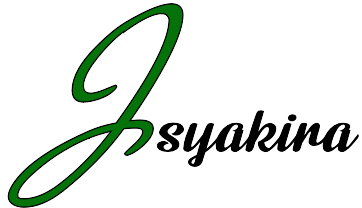SOPs: In the intricate landscape of manufacturing, where precision, efficiency, and consistency are paramount, the utilization of the 5W1H methodology in crafting Standard Operating Procedures (SOPs) emerges as a powerful tool for streamlining operations. In this article, we will delve into the significance of the 5W1H framework and its application in creating effective SOPs within the manufacturing sector. Throughout our exploration, we will underscore the impact of this method on achieving operational excellence and provide concrete examples to illustrate its power.
Unveiling the 5W1H Methodology
A Comprehensive Framework for Inquiry
The 5W1H methodology, rooted in journalism and problem-solving, revolves around six fundamental questions:
These questions serve as a structured framework for gathering information, understanding processes, and making informed decisions.
The Power of 5W1H in Crafting SOPs
From Inquiry to Precision
The integration of the 5W1H methodology in creating SOPs transforms these documents into dynamic tools for operational precision. Let’s explore how each element of 5W1H contributes to streamlining operations:
Identifying the individuals responsible for specific tasks ensures accountability and clarity. In the context of SOPs, clearly defining roles ensures that the right personnel are involved in each step of the process.
Defining the specific tasks and actions involved in a process lays the foundation for a step-by-step guide. SOPs answer the ‘What’ by breaking down complex operations into manageable and comprehensible steps.
Specifying the timing of each task ensures a smooth flow of operations. Whether it’s detailing the sequence of actions or establishing timelines, addressing the ‘When’ contributes to operational efficiency.
Designating the location for specific activities ensures that resources are utilized optimally. SOPs, incorporating the ‘Where’ element, guide personnel to perform tasks in designated areas, minimizing disruptions and enhancing spatial efficiency.
Providing the rationale behind each step fosters a deeper understanding among personnel. When employees comprehend the ‘Why’ behind their actions, they are more likely to adhere to procedures, contributing to both efficiency and quality.
Detailing the methods, tools, and techniques involved in a process ensures standardization. SOPs that address the ‘How’ element provide a consistent guide for personnel, reducing variability and enhancing operational uniformity.
SOP Example: Applying 5W1H to Assembly Processes
A Tangible Illustration of Operational Precision
Consider the assembly of a complex component as an example. Applying the 5W1H methodology to create an SOP Example involves:
Clearly defining the roles of individuals involved, such as assemblers, quality control personnel, and supervisors.
Breaking down the assembly process into specific tasks, including the identification of components, alignment procedures, and quality checks.
Establishing timelines for each step, ensuring that assembly progresses smoothly and aligns with production schedules.
Designating specific assembly areas with well-organized workstations, minimizing unnecessary movement and optimizing space.
Providing the rationale behind quality checks and precise assembly techniques to underscore the importance of each step.
Detailing the tools, equipment, and techniques required for each assembly task, ensuring uniformity across different shifts and personnel.
This tangible example illustrates how the 5W1H methodology can be seamlessly integrated into SOPs, transforming them into precise guides for operational tasks.
Benefits of 5W1H Integration in Manufacturing SOPs
Driving Operational Excellence
The incorporation of the 5W1H methodology in crafting SOPs offers numerous advantages within the manufacturing sector:
Clarity and Consistency: Clear identification of who, what, when, where, why, and how ensures that SOPs provide precise instructions, fostering consistency in task execution.
Accountability: Clearly defined roles and responsibilities contribute to a culture of accountability, reducing the likelihood of errors or variations in performance.
Efficiency Gains: Addressing the ‘When’ and ‘Where’ elements ensures that tasks are performed at the right time and in optimized locations, leading to efficiency gains.
Quality Assurance: Incorporating the ‘Why’ element promotes a deeper understanding of the importance of each step, contributing to enhanced quality assurance.
Standardization: The ‘How’ component ensures that methods and techniques are standardized, minimizing variability and creating a foundation for operational uniformity.
Conclusion: Precision in Every Process
A Framework for Operational Excellence
In conclusion, the power of 5W1H in crafting manufacturing SOPs lies in its ability to transform routine procedures into precise, standardized, and consistent processes. By answering the fundamental questions of who, what, when, where, why, and how, SOPs become dynamic tools that guide personnel, minimize errors, and drive operational excellence.
As manufacturing landscapes continue to evolve, the integration of the 5W1H methodology ensures that SOPs remain relevant, effective, and aligned with the pursuit of efficiency and quality. From assembly lines to quality control processes, the power of 5W1H shapes a future





